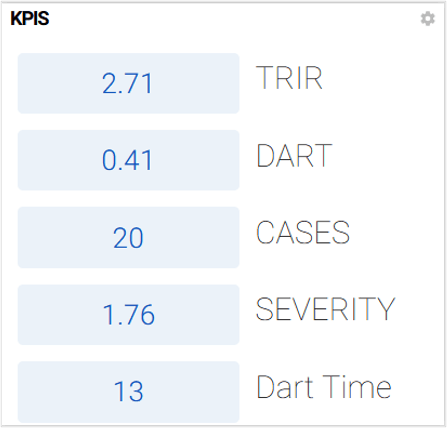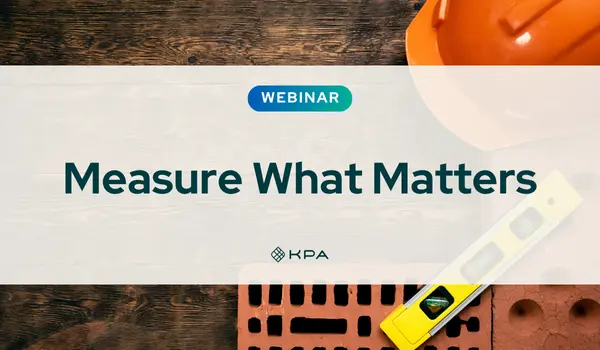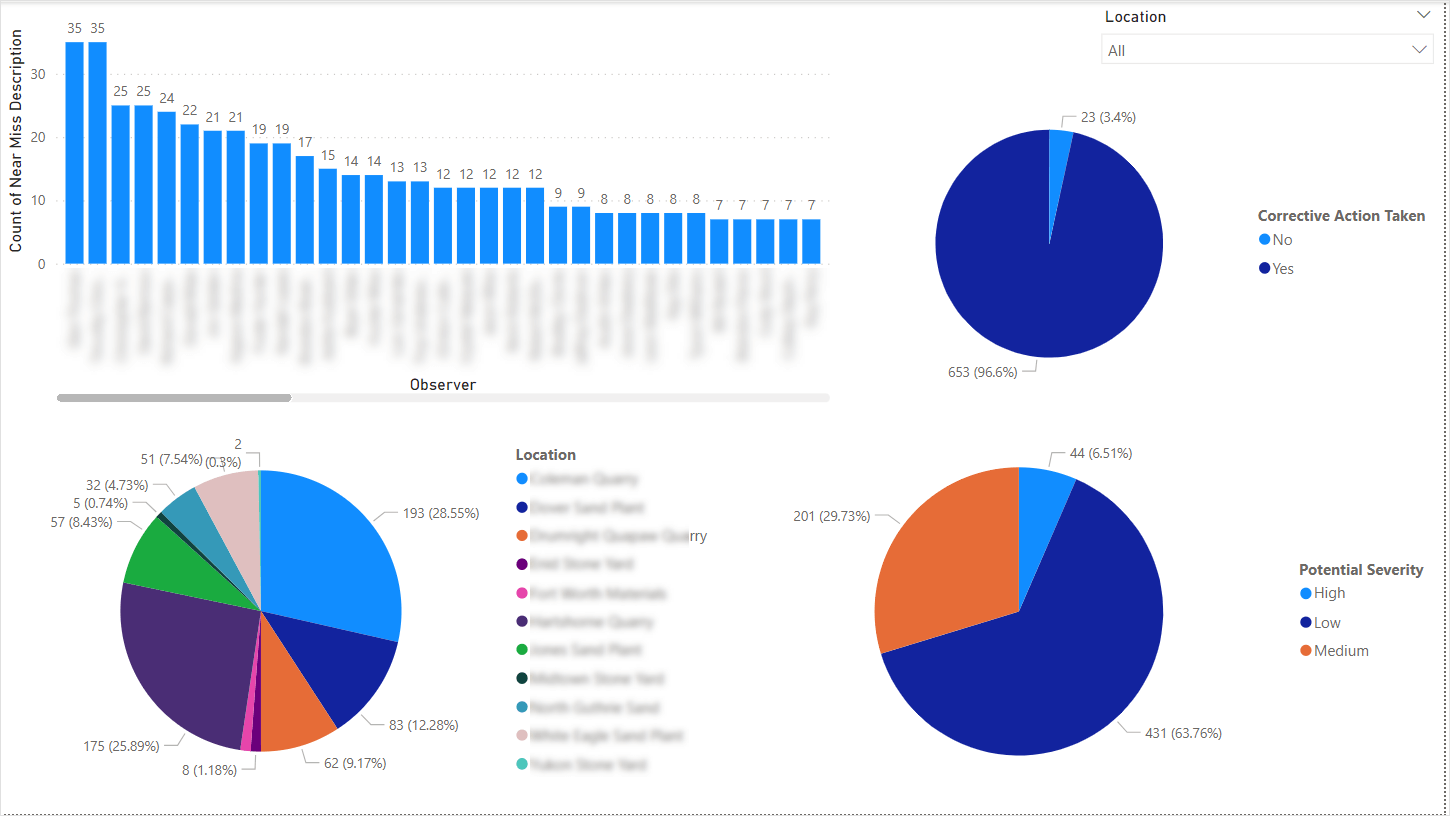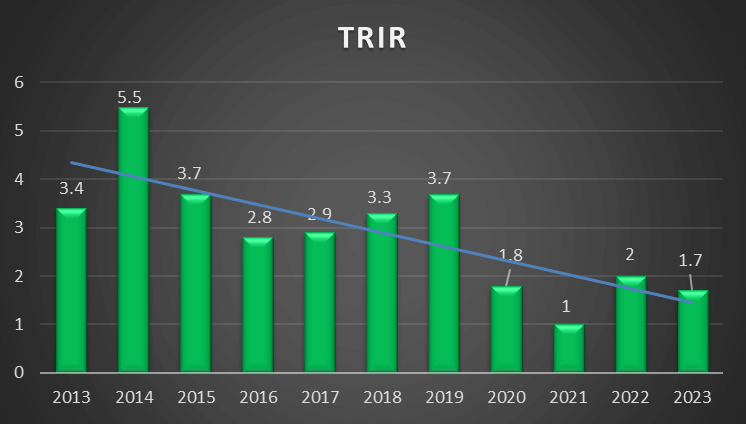Choosing the Key Performance Indicators (KPIs) for your Environmental Health and Safety Program ensures you’re making solid progress toward building a resilient safety culture. But how do ensure you’re measuring the things that genuinely make a difference? We suggest using the SMART framework for goal setting.
Smart KPIs are:
Specific
Measurable
Achievable
Relevant
Time-based
We must identify what to measure and focus on impactful objectives to achieve our safety goals. Progress should be measured along the way, not just at the end of the year. Let’s dive into the process of looking at your safety programs and identifying what to measure, and how to ensure it has a significant impact on your safety objectives.
Why does a KPI need to be Specific?
A KPI needs to be specific to help accurately measure the progress toward a particular goal or objective. This is where we start breaking things down to be specific so that we can deliver the outcomes we’re looking for.
Does Your KPI meet the Specific Test?
- Is your KPA clear as to what it precisely measures?
- Is there a widely accepted definition of the KPI?
Let’s take TRIR as an example. Does it pass the Specific test?
It is a lagging indicator to show whether people have had those more severe injuries or not. Many company’s customers monitor and decide if they want to do business with them. It’s also a defined formula and an excellent way to compare yourself to industry benchmarks.
Consider it similar to a credit score. Most people know what a credit score means. We know the scale. Your TRIR is essentially your safety credit score for your business.
Yes! TRIR is a KPI that passes the Specific test.
As an aside, just because TRIR is a lagging indicator doesn’t mean it’s not important. It is a direct correlation to performance. Let’s see if we can add some leading indicators into the mix.

Making sure your Safety KPI is Measurable
A KPI must be measurable to track progress toward objectives and determine outcomes.
Does your KPI pass the Measurable test?
- Is this something that we can actually track?
- Is this a number that we can look at?
- Can we look at a total count?
- Can we trend information over time?

Measure What Matters
Discover how real-time reporting boosts safety performance. Join experts to explore KPIs, reporting best practices, and key metrics for stakeholder buy-in.
Let’s take another KPI and run it through the wringer: Near Misses
This is a leading indicator that has the potential to impact a lagging indicator like TRIR. What are some ways to use Near Miss data?
Baby Step: Near Miss Reporting Frequency
For companies just starting in their safety journey, getting your folks involved in reporting near misses is a great first step. It’s a way to get your employees comfortable reporting a near miss or safety concern without dreading the consequences. And it can be a great way to get the whole organization to become owners of safety. This becomes an involvement measurement that you can monitor over time.
Intermediate Step: Near Misses with Corrective Actions
Once you’ve got employees comfortable reporting near misses, you’re gaining a good sense of what’s going on in your workplace. The next thing to measure is whether corrective actions are being taken when employees turn those reports in.
By focusing on near misses with corrective actions, we can get a sense of whether an issue is:
- Too big of an issue that the reporter doesn’t feel they can fix it themself.
- A coaching opportunity – can we talk with the submitter about potential solutions – illustrating how they can be a part of the safety culture we’re looking for?
- Commonplace in parts of the business that aren’t reporting often or aren’t assigning corrective actions – Can we dig deeper into what’s happening there?

Monitoring near misses with corrective actions helps your organization actually fix things – so that near miss does not turn into an accident. This helps you transition away from being reactive. You’re now looking at proactive trends.
Ensuring your SMART KPI is Achievable
We all want a zero-accident culture. We want to send people home in the same or better condition than they arrived. But we also need to make sure our goals are achievable. This involves setting realistic goals based on past performance.
Does your KPI pass the Achievable test?
- Is your KPI realistic based on past performance?
Set your safety program up for success. If your program is in its’ infancy…maybe your employees are just submitting your misses for the first time, and you’re seeing very few corrective actions, if any. Setting a goal of 100% corrective action can be counterproductive. It’s going to be difficult for your team to buy in if they feel like they’re being set up to fail. Make sure you’re setting realistic expectations and goals.
Choosing Relevant KPIs for your safety program
Relevant KPIs help ensure that you’re measuring and sharing metrics that speak to everyone in the organization and at any level in the organization.
Does your KPI pass the Relevance test?
- Does the KPI give insight into the performance of the organization in obtaining its strategy?
- Do they understand these goals?
- Do they understand what we’re reporting?
- Do they understand why we’re tracking this?
- Does acting on the KPI affect the organization’s performance?
Creating Time-Based KPIs for your EHS Program
If you want to measure the true performance of your EHS program, then creating time-based KPIs is crucial.
Does your KPI pass the Time-Based test?
- Have you specified the time period to reach the goal?
- Can you compare the results?
Having a point in time and tracking this information over time is critical. Consider your goal in terms of, “By this date, I’d like to meet this benchmark.” Otherwise, your program can just continue on, and you never measure its’ true performance.
Over what amount of time? Are you better this year than you were last year? Two years ago? Ten? Sometimes, you need a bigger picture to see improvement; year over year doesn’t share the whole picture.

Choosing SMART KPIs for your safety program is essential to building a resilient safety culture and achieving your safety objectives.
By using the SMART framework, you can ensure that your KPIs are Specific, Measurable, Achievable, Relevant, and Time-based. It’s important to identify what to measure and focus on impactful objectives to make solid progress towards achieving your safety goals. Remember to measure progress along the way, not just at the end of the year. By setting realistic expectations and goals, you can set your safety program up for success and make significant progress towards building a safer workplace for everyone.
Monitoring Safety Program KPIs is easier with solid EHS software in your team’s hands.
KPA simplifies data visualization and reporting, giving users easy access to actionable insights into their EHS program performance. Your data is presented in real-time, so no delay or extra steps are required to access the information. The dashboards are configured based on features tailored to your business’s unique requirements, giving you the power to make informed decisions that impact workplace safety.
Let KPA show you how to take a data-driven approach to safety.
Get the Guide: A Data-Driven Guide to Workforce Safety
Learn how to leverage your safety data and analytics to maintain a safe workplace.

